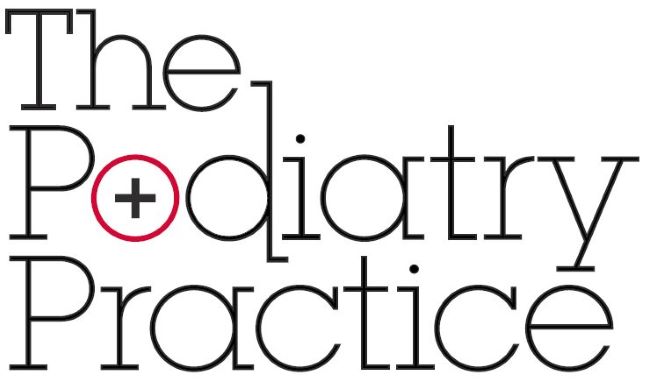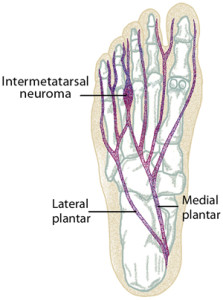Morton’s neuroma and metatarsalgia – The Podiatry Practice Brisbane
Pain in the forefoot is commonly called metatarsalgia. This is a very broad term that encompasses many different types of conditions. One of the most common causes of metatarsalgia is due to a neuroma, which is often called Morton’s neuroma.
A neuroma is a benign thickening of the nerve that passes down below and between the metatarsal bones and divides into branches that go into the toes. When this nerve is inflamed and swollen, it is termed a neuroma. What is often the case is that the nerve has become thickened by fibrosis (perineural fibrosis), and this is aggravated by ground reaction forces, tight footwear, or abnormal biomechanics.
A common symptom is shooting pain, burning and tingling, most commonly affecting the 3rd and 4th toes.
However, sometimes when the symptoms are classically suggestive of a neuroma, imaging such as an ultrasound or an MRI scan will fail to show one up. More often than not, another issue called adventitious bursitis is present. A bursa is like a tiny sack of fluid, and it can also inhabit the same area as the nerve which is affected by a neuroma. There mere fact that the bursa is inflamed (bursitis), can then put pressure of the nerve, reproducing the common symptoms that typify a neuroma.
How do you treat a neuroma?
Treatment for these conditions include a variety of methods including orthotics, shoe modifications, cortisone injections and sometimes surgical excision. Usually the most important aspect of care is to remove pressure from where the neuroma sits just under the skin at the front of the foot.
We will often recommend and provide a cortisone injection if the pain is failing to improve with non-invasive care. This is usually quick and relatively painless.
Morton’s neuroma surgery is typically the last resort option, and is only required in small percentage of cases that are unresponsive to conservative care. This usually requires a few weeks off work to enable the area to heal, and the use of a special post-operative sandal to accommodate bandaging and restrict movements of the foot. There is often residual numbness affecting the 3rd and 4th toes, but this can improve over time.







